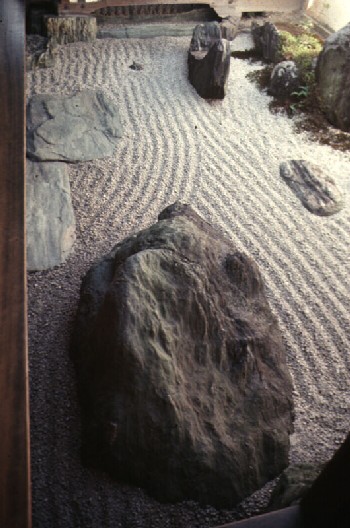| architecture |
| calligraphy |
| ceramics |
| clothing |
| comics |
| gardens |
| lacquerwork |
| literature |
| movies |
| music |
| painting |
| poetry |
| sculpture |
| tea ceremony |
| television |
| theatre |
| weaponry |
| thematic routes |
| timeline |
| the site |
context: gardens > dry gardens

|
Daisen-in: islands in the water |
General Description
From the mid-14th Century (see Daiho-ji) gardens start to appear without water - after all, sometimes large quantities of that are not conveniently available. However, water only vanished in the literal sense: it continued to be implied. Waterfalls were built without water; cascades of pebbles suggested streams; raked gravel evoked rippling water, with rocks or shaped bushes representing islands. These became particularly popular in Zen temple gardens, and it is these that most people think of as epitomising the Japanese garden.
Obviously these were not designed to be viewed from boats. Instead, they were for contemplation, even meditation, from a small range of fixed vantage points, most often along the veranda of the building they bordered.
